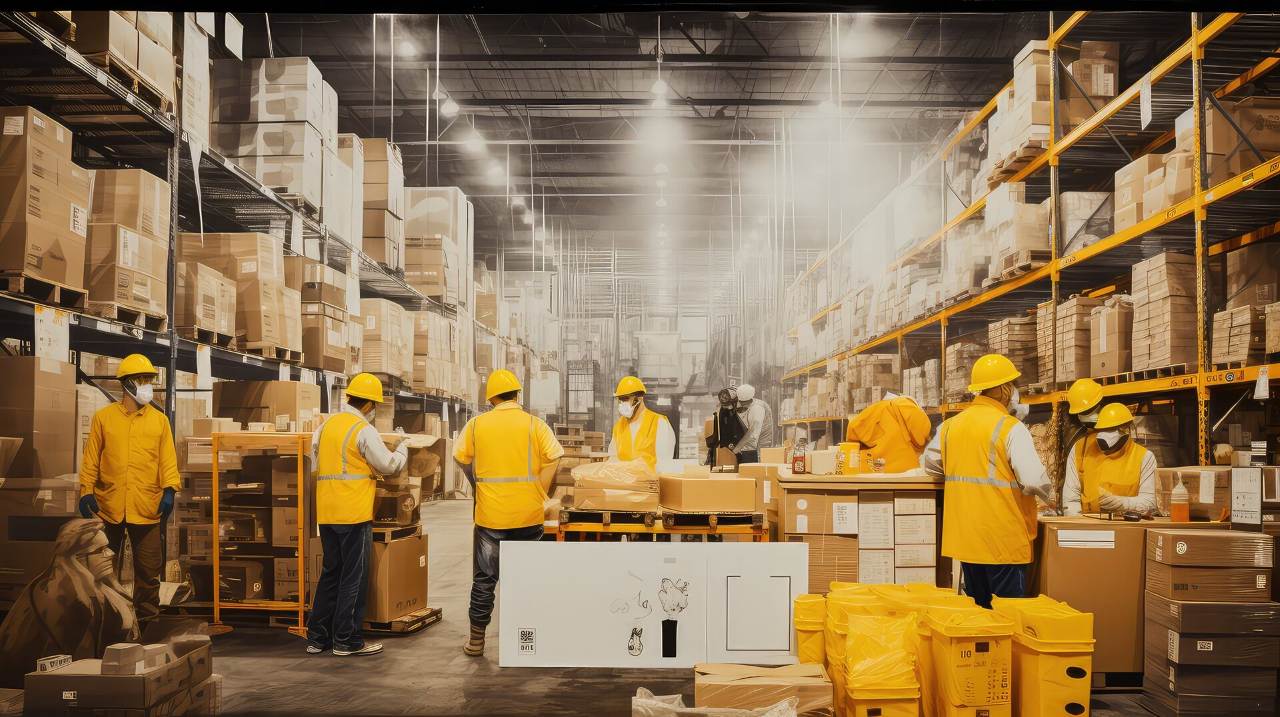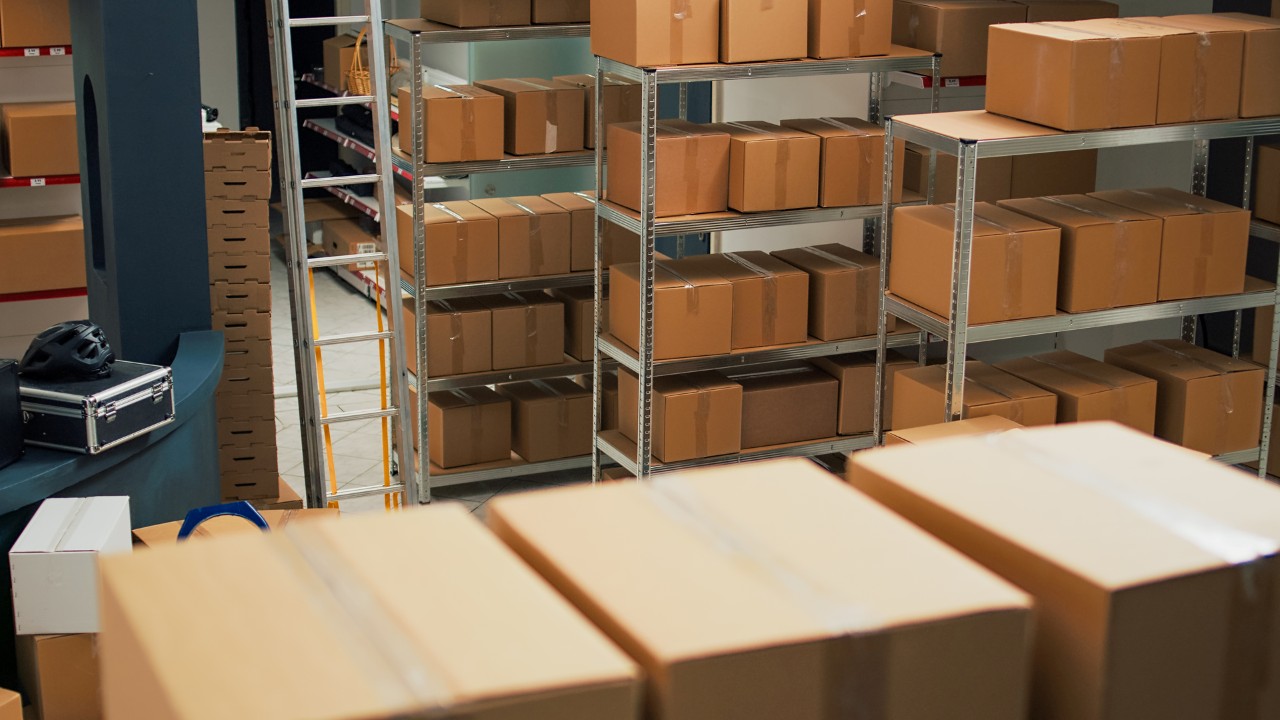Fulfilment Centre: Everything You Need To Know

13/02/2025
Sick of waiting ages for your online orders? Blame dodgy fulfilment. Good fulfilment centres get your stuff packed and shipped without the faff. Bad ones? Your parcel ends up who-knows-where.
What Is a Fulfilment Centre?
It's not just a fancy warehouse. Fulfilment centres do the grunt work after you hit "buy" - grabbing products off shelves, packing them up, and shipping them out. They're built for speed, not long-term storage.
Think of it this way: warehouses are like savings accounts (store stuff for ages), while fulfilment centres are like current accounts (constant money in, money out).
Most online shops would collapse without them. When holiday madness hits and orders pile up, proper fulfilment keeps things from going pear-shaped.
How Fulfilment Centres Work
The actual process isn't rocket science, but it needs proper organisation:
First, your products arrive at the centre. Staff check them in, log everything, and park them on shelves.
When someone buys something, the system pings workers who grab the item. Some fancy places use robots for this bit.
Then it's packing time - boxes, bubble wrap, tape, labels. Boring stuff, but mess this up and customers get broken junk.
Carriers collect everything, usually daily, and off your parcel goes.
Returns come back through the same place. They're checked, restocked, or binned if they're manky.
Fulfilment Centre vs. Warehouse: What's the Difference?
People mix these up all the time. Let's sort it out.
Purpose and Functionality
Warehouses are glorified storage units. Stuff sits there, sometimes for months on end. They're built for holding products, not processing orders.
Fulfilment centres are buzzing hives where products shouldn't hang about. They're designed to keep things moving - in one door, out another, as quickly as possible.
Order Processing and Speed
Warehouses handle bulk - shifting pallets from place to place, mostly to other businesses. Not set up for sending one phone charger to Dave in Portsmouth.
Fulfilment centres exist to process loads of small orders to individual buyers. Their whole setup is built around getting small packages out quickly.
Shops with optimised e-commerce logistics know how to use both for different jobs.
Who Uses Each Type?
Warehouses make sense for:
- Big manufacturing firms
- Companies shifting bulk products
- Seasonal goods needing long-term storage
Fulfilment centres work better for:
- Online shops
- Subscription box companies
- Anyone promising next-day delivery
Why Businesses Use Fulfilment Centres
Faster Order Processing
Let's face it - we're all impatient now. If you can't offer next-day delivery, someone else will.
Proper fulfilment centres turn orders around in hours, not days. They're built from the ground up for speed - from layout to staffing patterns to technology.
Try doing that from your garage or back office. It's a nightmare once you hit more than a handful of orders daily.
Scalability for Growing Businesses
The Christmas rush. Sale days. That influencer who suddenly mentioned your product. Order spikes will break your system if you're not ready.
Fulfilment centres handle feast or famine. They can process 10 orders one day and 1,000 the next without breaking a sweat. Try scaling that quickly in-house and watch your staff quit.
Cost Savings and Efficiency
Oddly enough, outsourcing often works out cheaper than DIY fulfilment. When you add up warehouse rent, staff wages, packing materials, shipping accounts, insurance, and technology, the numbers get scary fast.
Good fulfilment providers score bulk shipping rates you can't touch as a smaller business. Those discounts alone often cover the fees.
There's a reason why efficient inventory management is essential - it stops money bleeding out through overstocks, stockouts, and rushed shipping.
Key Features of a Fulfilment Centre

Inventory Management Systems
Decent fulfilment runs on solid inventory tracking. Not spreadsheets - proper systems that show exactly what's in stock, where it is, and when you need to order more.
These systems prevent the nightmare of selling products you don't actually have. They also stop you panic-ordering more stock when you've already got plenty buried somewhere in the warehouse.
Automated Picking and Packing
Manual picking is slow and error-prone. Better centres use technology to speed things up - from simple barcode scanners to full-on robots in the fancier places.
Automation cuts mistakes dramatically. And fewer mistakes means fewer returns and complaints eating into your profits.
Shipping and Carrier Partnerships
Good fulfilment centres don't stick with just one shipping company. They match each parcel with the best carrier for the job based on price, speed, and reliability.
They've also got the clout to negotiate rates that would make your eyes water. Discounts of 30-50% off standard shipping rates aren't unusual when you're sending thousands of parcels.
Choosing the Right Fulfilment Centre
Location and Shipping Zones
Where your stock sits matters enormously. If you're shipping nationwide but your fulfilment centre is in Aberdeen, southern customers will wait longer and pay more.
Smart businesses use fulfilment centres near their main customer bases. Some split inventory between multiple locations to cut delivery times and costs.
Technology and Integration
Your online shop and your fulfilment centre need to talk to each other without human intervention. Orders should flow automatically, and stock levels should update in real-time.
If you're manually downloading orders and emailing them over, you're doing it wrong. Look for centres with proper integrations to your selling platforms.
Scalability and Service Offerings
Your business won't stay the same size forever, so pick a fulfilment partner that can grow with you without charging through the nose for every little extra.
Consider what else you might need down the line - international shipping? Gift wrapping? Subscription box assembly? Switching fulfilment providers can be a massive headache, so think ahead.
Final Thoughts
Sorting your fulfilment isn't glamorous, but it keeps customers coming back. Nothing kills repeat business faster than late deliveries, wrong items, or damaged goods.
The right setup turns logistics from a constant headache into a background process that just works. It frees you to focus on the bits of the business you actually enjoy - product development, marketing, or whatever floats your boat.
 Who We Are
Who We Are
 Accreditations
Accreditations
 What We Do
What We Do
 IT Solutions
IT Solutions
 Our Warehouses
Our Warehouses
 Contact Us
Contact Us
 Our Partners
Our Partners
 E-commerce
E-commerce
 Start up
Start up
 Alcohol and Drinks
Alcohol and Drinks
 Health & Beauty
Health & Beauty
 Electronics
Electronics
 Amazon Order Fulfilment
Amazon Order Fulfilment
 International Road/Air/Sea
International Road/Air/Sea
 Parcel Deliveries
Parcel Deliveries
 Outsourced Warehousing
Outsourced Warehousing
 Van and Pallet Deliveries
Van and Pallet Deliveries
 Get a Quote
Get a Quote